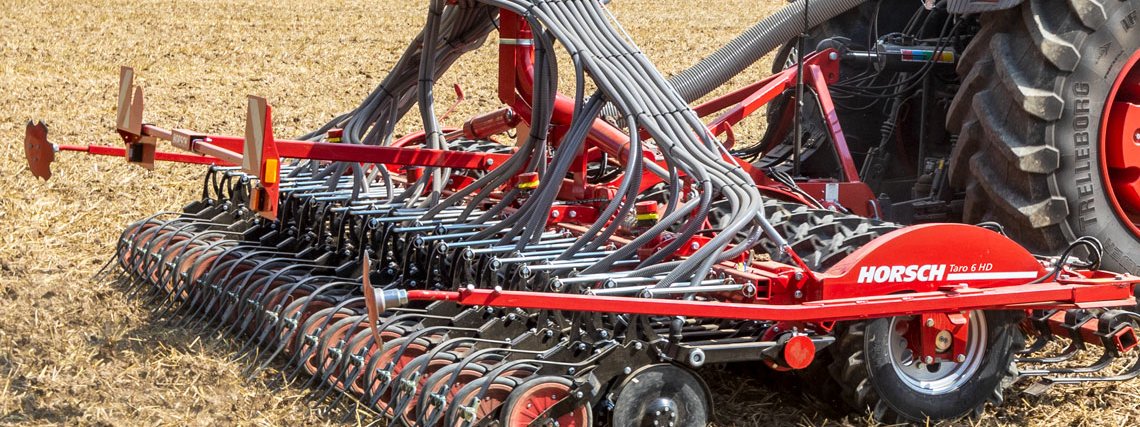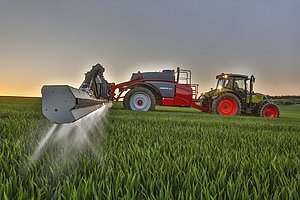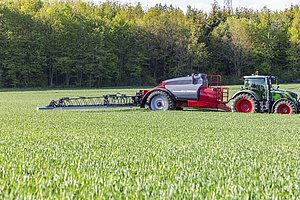PE vs. stainless steel in the plant protection sector: What is the best choice for my farm? (Part 1)
Polyethylene or stainless steel tanks – What are the differences and which one suits which farm?
Polyethylene or stainless steel tank – which one suits my farm? This question keeps coming up when talking to farmers. But it is not possible to give a general answer based on farm size or crop. You rather have to take an individual decision for every single farm.
The highly compressed polyethylene tank…
We often talk about a „plastic“ tank, but the term „plastic“ is a little bit too simple.
The polyethylene tanks are made of a special material mix. The outside of the tank appears to be rather rough, but the inside is extremely smooth and fine pored to make sure that as little plant protection agent as possible adheres to the walls.
This tank is manufactured with a special production method: The pulverised material mix the tank consists of is put into a mould which then is sealed. After that, the mould is taken to a heating chamber and heated. In this room happens what makes the HORSCH Leeb tank special, for in this chamber the mould is rotated in a 360° circle. The powder melts from the heat and is distributed evenly in the rotating mould until it has cooled down.
With this process there are no seams and or edges in the tank, it is completely smooth and thus it can easily and spotlessly be cleaned with the well-known continuous inside cleaning system. It is only on the outside of the tank that you can see a bulge which forms as the mould consists of two parts to open and close it.
The tank made of stainless steel…
When we take a look at the global market, the majority of tanks is made of stainless steel. Many customers appreciate the tank due to the even finer pore spectrum and due to the advantage that the tanks, similar to a milking plant, can be cleaned with acid and alkaline agents. Thus, even extremely adhesive agents can be flushed out of the tank and the boom.
The production process differs fundamentally from the production process of a polyethylene tank. The HORSCH LEEB stainless steel tanks are produced and tested in the company’s own welding shop. Due to the extremely fine pore spectrum and the high resistance to external influences like acids, bases and other chemicals stainless steel is very common not only in the food sector. HORSCH LEEB also uses these characteristics for its plant protection sprayers. For the cleaning characteristics of stainless steel are unique. Another advantage of stainless steel is the high stability. This allows for producing large tanks with little baffles, for example the tank of the HORSCH Leeb 8 GS with a capacity of 8,000 litres on one axle for maximum efficiency and manoeuvrability.
Now we know what the differences between the different tank versions are. But which material is ideal for which farm?
So which one is it? Highly compressed polyethylene or stainless steel?
As we already described above, it is not possible to give a general statement about which material is ideal for which farm. We rather have to consider a combination of farm-specific details.
We recommend the polyethylene tank for farms which prefer to work with liquid products which dissolve well and are not very adhesive. Moreover, the farm should clean the tank either very regularly, e. g. once a day in the evening, or work with the same tank mixture for one or several days and not change between the crops too often. For these farms, a polyethylene tank is ideal as with the continuous inside cleaning system the tank can be cleaned reliably, and the water solubility of the used products is so good that it is not necessary to use acids or alkaline products for cleaning.
Conversely, a stainless steel tank is interesting for farms that often use very complex tank mixtures and where the products are very adhesive or oily. For in this case the farmer can clean the tank rather easily and a carryover or an insufficient cleaning is almost excluded. Farms which have to use the complex products and mixtures we just mentioned often are farms which grow legumes, potatoes or special crops or farms that are looking for an efficient single-axle machine for plant protection.
Thus, there is no clear distinction. All farm-specific conditions have to be considered to be able decide where which material can be used. In the second blog article of this series, we will present two farms that use stainless steel and polyethylene tanks and describe the farms as well as the criteria for their purchase decision.


